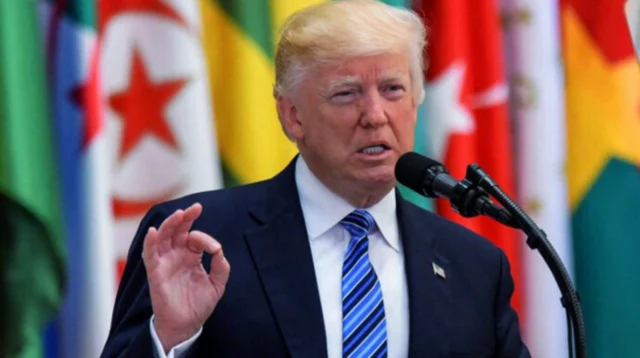The current military spending of 2025 is the highest in decades, as a result of growing geopolitical tensions, technological conflict, as well as strategic deterrence. Military expenditure around the world had soared by 9.4 percent in 2024 to 2.71 trillion, the biggest annual rise in military outlay in at least thirty years since the post-Cold War era. The positive trend indicates the prevalence of anxieties regarding the security of the region, development of threats, and the place of defense in the national strategy in the long run.
The US is still leading with 2024 expenditure of 997 billion constituting 37 per cent of the world total military expenditure. The US together with NATO allies influences a significant part of the global security system. But it is not just the traditional defense powers that are on the trend. China, India, Russia, Saudi Arabia, and Germany are among the nations that have been increasing their expenditure on the military thus indicating a multipolar military setting whereby power is becoming more and more strategic based on budgetary investment and technological advancement.
US defense policy amid fiscal and strategic crosscurrents
The US budget on defense in the coming fiscal year 2025 is 849.8 billion. The growth is not as high as it was in the past year, but it still is short of the inflation, which leaves the purchasing powers low. Discretionary defense spending is limited under the Fiscal Responsibility Act of 2023, which limits it to $895 billion of real spending, and real growth is hard to achieve without additional authorizations.
Significant modernization projects have been postponed or cut in order to maintain operational capability. The Next Generation Fighter program in the Navy and the Next Generation Air Dominance program in the Air Force are some of the affected programs. These changes are a policy decision to ensure the near-term capacity in forward operations and put off long-term investments.
Congressional Budget Office data indicates the effective value of the 2025 defense budget would be lower by 15 billion dollars than it is in 2024, after taking into consideration inflation and the expiration of emergency appropriations. As the interest on the US public debt will exceed the amount of money spent on defense by 31 billion in 2024, the need to exercise fiscal discipline increases with the strategic demand.
Reaffirming strategic priorities
The US defense strategy of 2025 focuses on resilience in alliances, integrated deterrence, and technological dominance. It is still funded to enhance the Pacific Deterrence Initiative and European force posture to enhance readiness in regions deemed crucial in containing Chinese and Russian influence.
The funds are placed towards nuclear modernization, missile defense, and new technologies like AI, cyber systems, and autonomous platforms. These investments are the key to future capability whereby American forces will be agile and credible in all domains.
Nevertheless, imbalances that are specific to service still exist. The decades of underinvestment in the Air Force and Space Force put the two at a disadvantage compared to the Army and Navy. Analysts observe that these gaps put the effectiveness of joint forces at risk in future multi-domain operations, especially as potential adversaries develop hybrid and space-based capabilities.
Global military trends and strategic recalibration
The competitive patterns will be influenced by the fast rate of growth in military spending in Asia, Europe, and the Middle East. By 2025, the defense budget of China has increased to an estimate of 289 billion with significant spending on naval capabilities, hypersonic missiles and space activities. Despite being under sanctions, Russia continues to have a strong defense budget by producing internally and having foreign collaborators.
According to the Stockholm International Peace Research Institute, over 100 countries were expected to increase their defense budgets in 2024, with much of this going to cyber preparedness, surveillance systems and acquisition of arms. This tendency is an indicator of the end of regional posturing and the start of global alignment efforts, since states are interested in deterrence as well as strategic advantage.
Much of this activity is based on the rivalry of technological superiority. Although the US continues to dominate in defense R&D, the enemies are closing the gap. The ability to develop and to introduce new systems at mass scale has turned into a hallmark of defense planning across the globe.
Economic constraints and societal trade-offs
The economic opportunity costs of military investments, as central as they are to national security, are created. Governments are increasing the defense budgets at the expense of social programs, public services and infrastructure. The same tension can be seen in the US where debt interest increases and domestic policy priorities are underfunded.
According to SIPRI researcher Xiao Liang the situation is as follows,
“As governments divert spending toward defense, economic and social trade-offs are likely to affect national development paths for years.”
Economic growth and fiscal prudence has become a critical part of strategic planning; and in democracies, defense expenditure must compete against the populace and legislature.
Long-term sustainability is not only directly related to the size of the budget, but also efficiency in allocations. Policymakers are now pushing in favor of redesigned expenditure that brings maximum strategic effects without aggravating financial risks. The difficulty is that it must be able to remain global leaders while at the same time adjust to limited economic circumstances.
Long-term implications for US leadership and alliances
American defense spending has an effect on the cohesion of alliances and issues of burden-sharing. NATO depends on the US leadership, and the United States spends two-thirds of the entire NATO military expenditure. But allies are also increasing their defense budgets, in part because of US pressure and in part because of changing threat perceptions.
Countries such as Poland, Japan and the United Kingdom are investing in higher capabilities, as well as in more significant input into alliance strategies. This changing environment necessitates that Washington juggle between strategic direction and consultation and flexibility whereby common goals are translated into simultaneous action.
Partnerships with Australia, South Korea, and the Philippines in the Indo-Pacific solidify American presence and new arrangements like AUKUS are indicative of a broader change in the region in terms of defense. US 2025 strategy represents a refocused international strategy, beyond unilateral projection of power, to partnerships with resiliency.
Shaping the next phase of defense innovation
The US defense ambitions are still being propelled by technological change. In 2025 the focus is on artificial intelligence, next generation communications and autonomous weapons systems. It is on these abilities that future deterrence models and success in contested areas will be built.
The investments in hypersonics, space resilience and digital infrastructure represent the move towards tools that are flexible and scalable and can adapt to changing fast conditions. The innovation hubs at the Department of Defense and engagement with the private sector continues to provide the focus to meet this vision, although sustainability of investment and defined strategic targets is paramount to keep the process going.
The modernization drive is combined with an attempt to simplify the acquisition procedures, improve the retention of talent, and facilitate the resilience of the industrial base. As important as the technologies themselves are these internal changes that define the overall efficiency of the American defense in the long run.
The scale and distribution of global military expenditure in 2025 reflect profound shifts in international order. While the US remains the dominant actor, its strategic future hinges on its ability to reconcile ambition with economic constraints, build coalitions that share both risk and reward, and drive innovation at a pace that anticipates and does not react to emerging threats. As global defense spending rises, the shape of security will depend not just on how much nations invest, but how wisely they align resources with strategy.





